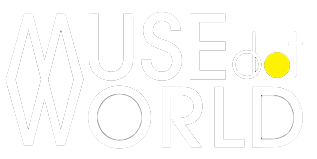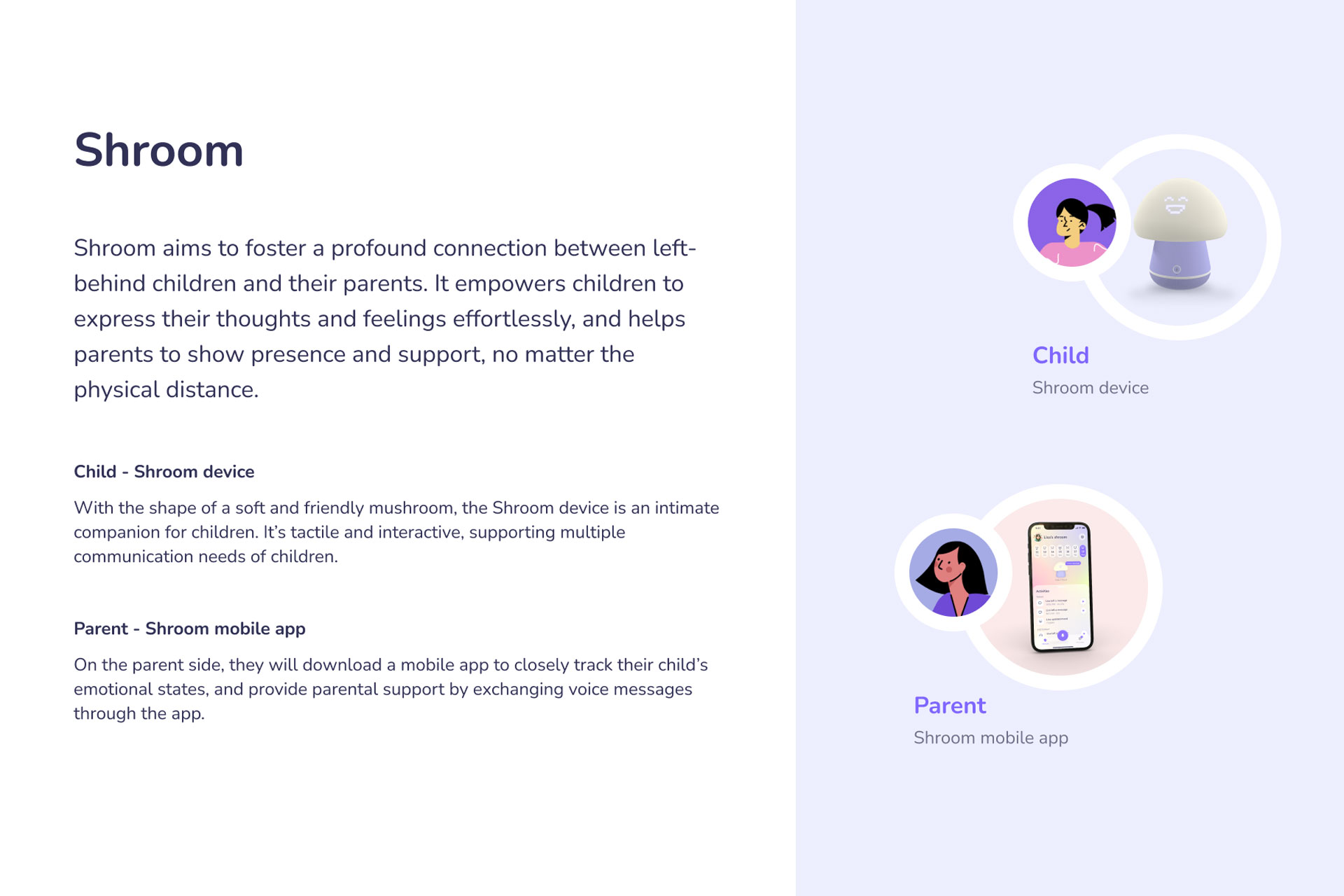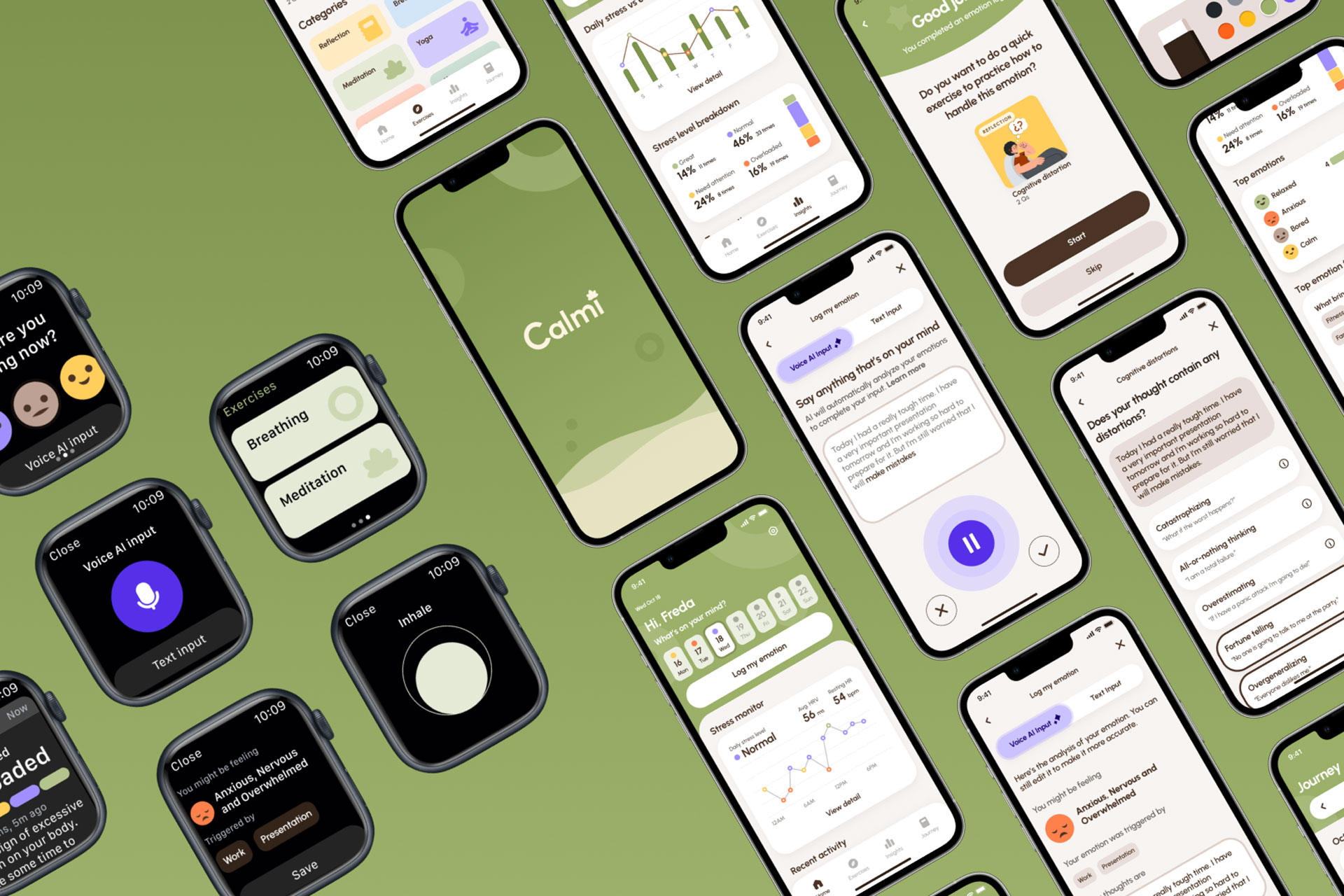Interview with Mengqiu Hu from United States

Interview with Gaspar Marquez of Gaspar Marquez Photography
January 11, 2024
Interview with Shriya Das from United States
January 12, 2024Mengqiu Hu
Mengqiu Hu is a product designer with enterprise UX, consumer products, and IoT experience. She designs business tools on Pinterest, valuing user empathy, strategic thinking, and creating appealing content. She enjoys bridging technology and people for exceptional user experiences.
My name is Mengqiu Hu, a.k.a. Freda. I'm a product designer with diverse experiences in enterprise UX, consumer products, and IoT. I'm currently designing business tools on Pinterest. As a product designer, I build user empathy, prototype concepts, iterate for solutions, and craft designs.
Beyond design, I've also worn the hats of both a product manager and a software engineer. My unique interdisciplinary experience allows me to approach design with a holistic perspective and strategic mindset.
From a young age, I have been passionate about creating visually appealing and creative content. This set the stage for a journey that evolved during my undergraduate years as a computer science student. It became clear to me that a truly impactful technological product goes beyond technological innovation; it must effectively address user issues and enhance human experiences.
This insight sparked my passion for delving into the intricacies of human needs, and I found immense joy in crafting solutions that bridge the gap between technology and people and deliver exceptional user experiences. This led me to discover a fulfilling career path as a product designer, where I could seamlessly blend my design interests with my engineering skills to create products that not only function efficiently but also resonate with users on a profound level.
In my role as a Product Designer at Pinterest, my primary focus is on designing business tools tailored to empower advertisers and merchants to achieve their goals on Pinterest. I design web and mobile experiences systematically, interactively, and visually to create elegant solutions to complex B2B problems.
I take ownership of the entire user experience lifecycle, from understanding user insights to designing through phases of ideation, refinement, handoff, and launch. Collaboration is at the heart of my work. I work closely with engineering, product management, and user research teams to create impactful, user-centric, and data-driven solutions that resonate effectively with our diverse audience.
For me, design goes beyond aesthetics. It's a purposeful, user-centric, and creative process. At its core, design is driven by the imperative to address challenges and solve problems. Whether creating a physical product, a digital interface, or a system, design aims to provide effective solutions.
The design also prioritizes the end user, emphasizing understanding user behavior and the need to craft products or systems that are not only functional but also enjoyable and user-friendly. In addition, design is creative, involving a broad exploration of novel ideas and different possibilities.
I am deeply interested in designs that promote well-being and create positive change through human-centered solutions. I firmly believe in the transformative power of design to influence and shape the world. As designers, I believe we have a social responsibility to use this power to make positive contributions to society.
This involves crafting products or services that positively impact people's lives, encouraging people to challenge their perceptions and take positive action. This underscores the idea that design is not just about aesthetics, but also about creating meaningful and lasting impacts on individuals, communities, and the planet.
My design style is characterized by a thoughtful blend of empathy and systematic thinking. At its core, I prioritize understanding the emotions, needs, and perspectives of the end user, ensuring that my designs resonate on a human level. This empathetic approach allows me to create solutions that not only meet functional requirements but also address the deeper, emotional aspects of the user experience.
At the same time, my design process is systematic and methodical. I believe in approaching projects with a structured human-centered design process, systematically analyzing problems, and iteratively refining solutions. This ensures that my designs are not only optimized for usability but also well organized and seamlessly integrated into the wider context.
My design process usually differs by project, but generally speaking, it is a journey through empathy, definition, ideation, prototyping, iteration, and finalization.
Empathize: It begins with empathizing through user research and data analysis to comprehend user needs and behaviors, along with competitive research for insights into existing solutions.
Define: Defining the objectives and goals of the design project and establishing success criteria to ensure a clear direction.
Ideate: Generate a range of creative concepts and explore different design directions. Brainstorm and sketch out potential solutions.
Prototype: Create wireframes and develop prototypes to outline the basic structure, layout and user flow. Iterate: Collect feedback from stakeholders, clients, and end users. Iteratively refine the design based on feedback and testing results.
Finalize: Finalize designs, ensuring all details are polished and cohesive. Prepare design assets and documentation for handoff to development.
I feel incredibly honored to have won the 2023 NY Product Design Awards and be acknowledged by a platform that celebrates design excellence. This achievement goes beyond a personal triumph—it is a recognition and validation of my creativity, design quality and innovation in the design field by respected members of the design community and industry professionals.
This recognition greatly boosts my confidence and motivates me to continue push the boundaries of design. I am eager to embrace new challenges that not only advance user experiences but also contribute positively to the world through impactful design.
Shroom is a digital device that helps foster real-time connection between left-behind children and their parents, encouraging open communication and strengthening family bonds. This innovative project stems from a profound understanding of the emotional challenges faced by families separated due to urbanization. Having observed many children who were forced to live apart from their parents in my rural hometown, I was inspired to create a solution that could bridge this emotional gap and foster deeper connections. The final solution I chose to enter serves as a tangible bridge, providing a real-time, two-way communication channel.
It empowers children to freely express their feelings through mood updates and voice messages so that their authentic thoughts can be heard and understood. It also enables parents to stay connected with their remote children and respond to their emotional needs promptly through a dedicated mobile app. It not only facilitates communication but also nurtures a deeper emotional bond between parents and their children, reducing feelings of loneliness and abandonment.
The modern world's rapid pace has brought mental well-being to the forefront as a critical concern. Calmi is an innovative stress tracking and management app that enhances emotional understanding and guides users towards a serene state of mind. It addresses the challenges many individuals face in managing stress, including inconsistent emotional state tracking and a lack of effective reflection methods.
The project's user-centered design philosophy, integration with latest technology, and commitment to scientific methodologies, sets it apart. Calmi strives not only to offer a comprehensive solution to stress management but also to actively contribute to users' long-term emotional well-being.
The biggest challenge with the Shroom was navigating the unique environmental and social context of the target audience. Addressing the specific needs of left-behind children in rural areas, where conventional communication tools often fall short, required a thoughtful and culturally sensitive approach.
Additionally, the integration of physical, voice, and digital interactivity added a layer of complexity, requiring careful consideration to ensure the product effectively addressed the emotional needs of the users in a tangible and engaging manner. Balancing these interaction modals to create a cohesive and user-friendly experience was pivotal to the success of the project.
For Calmi, the primary challenge was to reduce the friction associated with emotion logging, thereby boosting user motivation. The incorporation of multi-channel input options and AI voice analysis emerged as a groundbreaking solution, alleviating the burden of manual logging. This innovative approach not only significantly simplified the emotional tracking process but also made it more engaging and accessible for users. Another crucial challenge involved not only fostering users' comprehension of their emotional well-being but also instigating positive changes.
To tackle this, we embraced a scientific approach, incorporating Cognitive Behavioral Therapy (CBT)-based exercises. These exercises empower users to adapt their thought processes and engage in practices that facilitate positive transformations, aligning with Calmi's mission to not just track but actively contribute to users' emotional well-being.
Inclusive: the inclusivity of the design industry stands out as a beacon. It's a field that welcomes diverse perspectives, talents, and backgrounds.
The collaborative nature of design allows for a wide range of ideas, fostering an environment where everyone's unique contributions are valued. This inclusiveness not only cultivates innovation but also makes the design community a vibrant and dynamic space.
Future-thinking: one of the most exciting aspects of the industry is its forward-looking nature. Design constantly evolves to meet the needs of the future, incorporating emerging technologies, trends, and societal shifts.
This forward-thinking approach challenges designers to stay at the forefront of innovation, making every project an opportunity to shape what lies ahead.
Creative: creativity is the beating heart of the industry. The freedom to explore novel ideas, experiment with different concepts, and push the boundaries of conventional thinking is a constant source of inspiration. Whether it's crafting visually stunning aesthetics, solving complex problems, or reimagining user experiences, the inherent creativity of the industry ensures that every project is an opportunity for innovation and self-expression.
Internet Boom: China's design industry has thrived amidst the nation's rapid internet boom, fueled by the widespread adoption of digital technologies, e-commerce, and mobile applications.
This surge has not only reshaped user behaviors but also spurred innovation in technology and design, presenting unique challenges and opportunities for designers in China's dynamic digital ecosystem.
Population: China's expansive population profoundly shapes its design industry, challenging designers to create inclusive and scalable solutions.
The diverse needs of this vast audience necessitate a nuanced design approach, fostering innovation as designers address multifaceted challenges and opportunities within the immense Chinese market.
Power Apps: China's design landscape is defined by the prevalence of "super apps" like WeChat and Alipay, revolutionizing traditional app functionalities. These multifunctional platforms offer users a seamless suite of services, demanding a holistic and user-centric design approach.
The success of power apps in China underscores a distinctive design paradigm, prioritizing seamless user experiences and functionality convergence.
Sustainable Design Practices: the design industry is shifting toward eco-friendly practices, emphasizing sustainable and circular design.
Designers play a pivotal role in considering product life cycles, materials, and environmental impact, with a focus on reducing waste and carbon footprints.
Multi-modal Experiences: The design will adapt to diverse interfaces over the next 5-10 years, embracing a multi-modal approach. As technology advances, designers will create seamless experiences across platforms like AR, VR, and voice interfaces. The emphasis is on adaptability and accessibility for evolving user interactions.
Integration of AI in Design: Artificial Intelligence (AI) is transforming design with machine learning and algorithms. I envision designers collaborating with AI for data analysis, user personalization, and task automation.
Ethical considerations surrounding AI usage are emerging as a crucial aspect of the industry's evolution.
Firstly, I encourage students to delve into design topics that make meaningful impacts, considering the social, environmental, and ethical implications of their work.
Designs with a positive contribution to society, addressing real-world problems, or enhancing user experiences not only make a lasting impression but also increase the likelihood of recognition by prestigious design awards.
Secondly, embrace new technology and skills. Participating in design awards provides an excellent opportunity to explore and learn new things. For instance, experiment with how AI can enhance design efficiency and inspire creativity
Avoid limiting yourself to specific processes and media. Explore new forms and channels of design to effectively communicate ideas and solve problems in innovative ways. This openness to learning and embracing new technologies can significantly enhance your design capabilities and set you apart in the dynamic field of design.
Medium is a platform that hosts a plethora of articles on design, user experience, and industry trends. Many experienced designers share insights, case studies, and tutorials, making it a valuable resource for staying updated and learning from others' experiences.
Many prestigious companies or design agencies also publish design blogs to share their work and learnings. This provides a unique opportunity to understand how these excellent design teams approach and solve complex real-world design problems.
Online learning resources such as Coursera, LinkedIn Learning or Skillshare offer many design courses and tutotials taught by industry professionals or top institutions. Taking these courses is a great way to learn design and improve your design skills in a more systematic way.
Beyond design, I've been delving into alternative avenues for artistic expression. Recently, I've been learning creative coding, which involves the use of programming languages to generate visual art, interactive installations, and multimedia experiences.
This exploration allows me to blend my technical skills with a passion for artistic innovation, opening up exciting possibilities to craft digital artworks.
One person who has profoundly inspired my design philosophy is Don Norman. His influential book, "The Design of Everyday Things," has been a guiding force in shaping my understanding of design. His insights have emphasized the importance of creating not just visually pleasing objects but, more importantly, things that are inherently useful, enhance usability, and seamlessly integrate into the daily lives of users.
His perspective inspired me to commit to the functional and user-centric aspects of design, influencing my approach to creating solutions that go beyond the surface, making a meaningful impact on users' lives.
My key to success is to be brave enough to try and don't fear failure. Embracing challenges and stepping outside your comfort zone is where true growth occurs.
Perseverance and resilience are the driving forces that propel you forward, turning challenges into opportunities and setbacks into lessons. So be bold in your pursuits, maintain a resilient spirit, and let each experience, no matter successful or not, contribute to the making of a better you.
Winning Entries
Shroom | 2023
Calmi - Stress tracking and management companion | 2023
Mengqiu Hu
Shroom/Calmi
Mengqiu Hu is a product designer with enterprise UX, consumer products, and IoT experience. She designs business tools on Pinterest, valuing user empathy, strategic thinking, and creating appealing content. She enjoys bridging technology and people for exceptional user experiences.
Read more about this interview with Raquel Fuentes from United States, the Silver Winner of the 2023 NY Product Design Awards.



